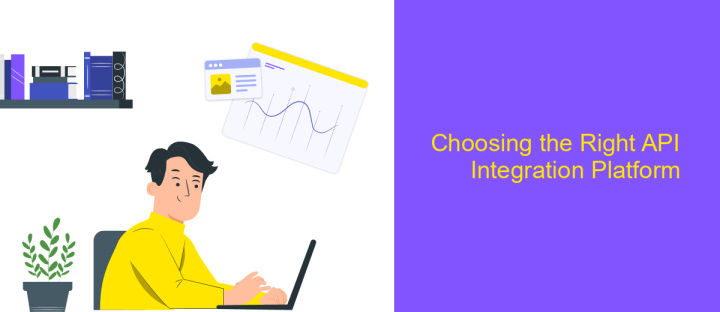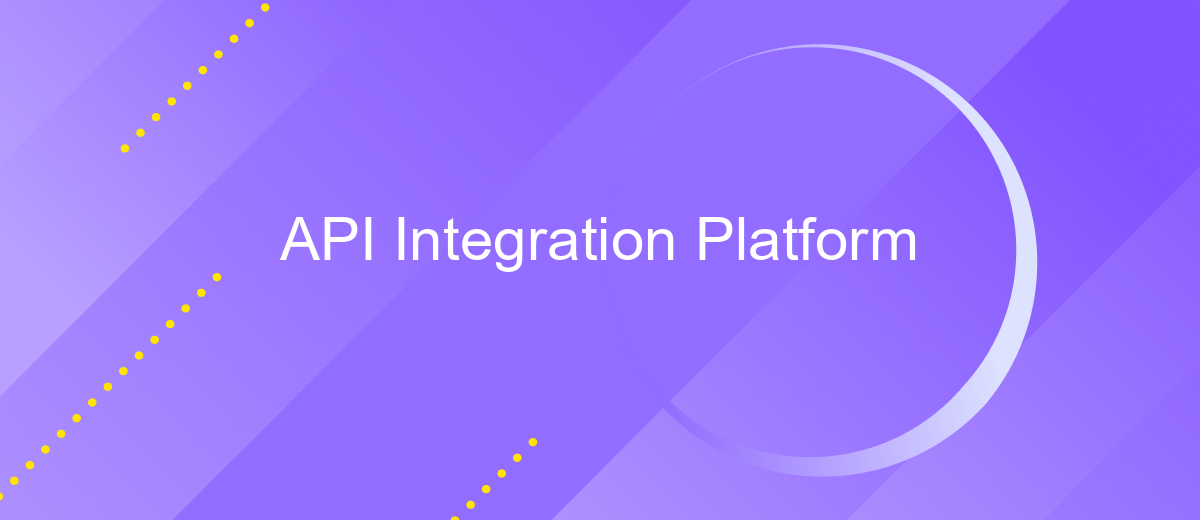API Integration Platform
In today's fast-paced digital landscape, businesses are increasingly relying on API integration platforms to streamline operations and enhance connectivity. These platforms act as vital bridges, enabling seamless communication between disparate software systems and applications. By leveraging API integration, companies can automate workflows, improve data accuracy, and foster innovation, ultimately driving growth and efficiency across their operations. Discover how adopting an API integration platform can transform your business strategy.
Introduction to API Integration Platforms
API Integration Platforms have emerged as essential tools for modern businesses, enabling seamless connectivity between disparate software applications. These platforms simplify the process of integrating various APIs, allowing organizations to enhance functionality, improve data exchange, and streamline operations. By providing a unified interface, API Integration Platforms reduce the complexity involved in managing multiple APIs and facilitate faster deployment of new services.
- Centralized API management for consistent performance
- Real-time data synchronization across applications
- Enhanced security measures to protect data integrity
- Scalability to accommodate growing business needs
- Automation of routine tasks to increase efficiency
Incorporating an API Integration Platform into your business strategy not only optimizes workflows but also accelerates digital transformation efforts. These platforms provide the flexibility to adapt to evolving technological landscapes, ensuring that businesses remain competitive and responsive to market demands. As the reliance on cloud services and digital ecosystems continues to grow, API Integration Platforms will play a pivotal role in driving innovation and operational excellence.
Key Features and Benefits

The API Integration Platform streamlines the process of connecting disparate systems and automating workflows, enhancing operational efficiency. It offers a user-friendly interface that allows both technical and non-technical users to set up integrations without coding. This platform supports a wide range of applications, ensuring seamless data exchange across various business tools. By reducing manual data entry and minimizing errors, it significantly improves productivity and accuracy in data handling.
One of the key benefits of using a platform like ApiX-Drive is its ability to facilitate real-time data synchronization, keeping all connected applications up-to-date. With customizable triggers and actions, businesses can tailor integrations to their specific needs, enhancing flexibility and scalability. ApiX-Drive also offers robust security features, ensuring that data transfers are encrypted and secure. This not only protects sensitive information but also complies with industry standards, giving businesses peace of mind. Overall, the platform empowers organizations to optimize their digital ecosystems, driving innovation and growth.
Types of API Integration Platforms

API integration platforms are essential tools that facilitate seamless communication between different software systems. They enable businesses to automate workflows, enhance productivity, and improve data accuracy. These platforms vary widely in their capabilities and use cases, catering to diverse business needs. Understanding the types of API integration platforms helps organizations choose the right solution for their specific requirements.
- Cloud-based API Integration Platforms: These platforms are hosted on the cloud, offering scalability and flexibility. They are ideal for businesses looking to minimize infrastructure costs and leverage cloud computing benefits.
- On-premises API Integration Platforms: Deployed within an organization's own IT environment, these platforms provide greater control over data and security. They are preferred by companies with strict compliance and data privacy requirements.
- Hybrid API Integration Platforms: Combining both cloud and on-premises solutions, hybrid platforms offer a balanced approach. They allow businesses to integrate cloud applications while maintaining control over sensitive on-premises data.
Choosing the right API integration platform depends on various factors, including the organization's size, industry, and specific integration needs. By understanding the different types available, businesses can make informed decisions to enhance their operational efficiency and drive innovation.
Choosing the Right API Integration Platform

When selecting an API integration platform, it's crucial to consider your organization's specific needs and goals. A well-chosen platform can streamline processes, enhance connectivity, and drive business growth. Begin by assessing the types of APIs your business frequently uses and the complexity of integrations required. This understanding will guide you in identifying a platform that aligns with your technical requirements.
Another important factor is the platform's scalability and flexibility. As your business grows, your integration needs may evolve, so it's essential to choose a solution that can adapt to these changes. Evaluate the platform's ability to handle increased data loads, support additional APIs, and integrate with emerging technologies.
- Ease of use and user interface: Ensure the platform is user-friendly and accessible to your team.
- Security features: Look for robust security protocols to protect sensitive data.
- Support and documentation: Consider the availability of customer support and comprehensive documentation.
- Cost: Assess the pricing model to ensure it fits within your budget.
Ultimately, the right API integration platform should empower your business to efficiently manage and optimize API interactions. By carefully evaluating your options, you can make an informed decision that supports your long-term objectives.
Future Trends in API Integration
As technology continues to evolve, the future of API integration is set to be shaped by several key trends. One significant trend is the increasing demand for seamless connectivity between diverse systems and applications. Businesses are seeking more efficient ways to integrate their services, leading to the rise of integration platforms like ApiX-Drive. These platforms simplify the process of connecting various APIs, enabling companies to automate workflows without extensive coding knowledge. This trend is expected to grow as more organizations recognize the need for agile and scalable integration solutions to stay competitive.
Another emerging trend is the focus on enhanced security and data privacy in API integrations. With the growing number of integrations, the potential for security vulnerabilities increases. Therefore, future API integration platforms will likely prioritize robust security measures, including advanced authentication protocols and encryption standards. Additionally, the integration of AI and machine learning into API platforms is anticipated to provide smarter data processing and predictive analytics, further enhancing the capabilities of these integrations. As these trends unfold, they will redefine how businesses leverage APIs to drive innovation and efficiency.
FAQ
What is an API Integration Platform?
How does an API Integration Platform work?
What are the benefits of using an API Integration Platform?
Can non-developers use an API Integration Platform?
What should I consider when choosing an API Integration Platform?
Routine tasks take a lot of time from employees? Do they burn out, do not have enough working day for the main duties and important things? Do you understand that the only way out of this situation in modern realities is automation? Try Apix-Drive for free and make sure that the online connector in 5 minutes of setting up integration will remove a significant part of the routine from your life and free up time for you and your employees.

